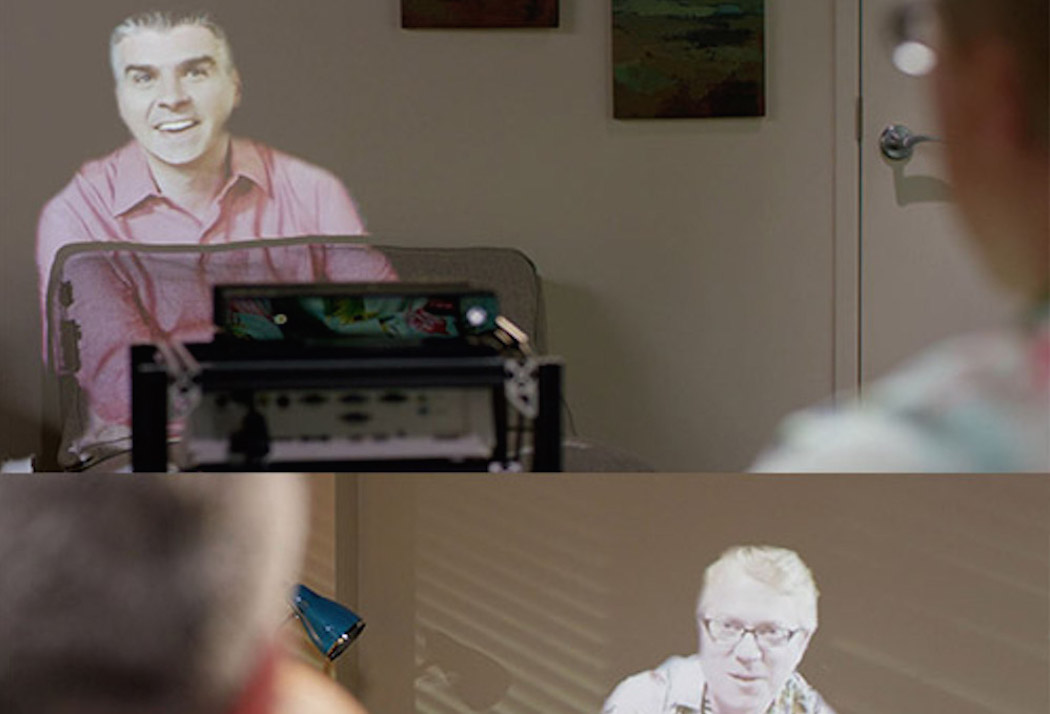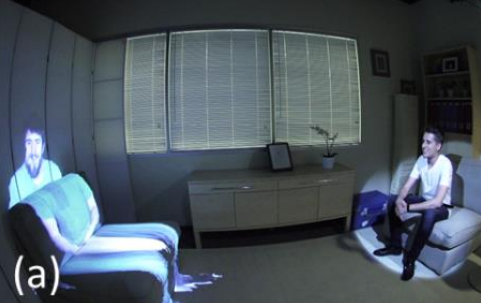
Telepresence
In this day and age, it almost comes as no surprise when new technology emerges that’s poised to change how people live and work. Take, for instance, Microsoft Research’s Room2Room project.
In a previous post, we talked about how the technology is going to use projected augmented reality to give users a more interactive and immersive approach to video conferencing between remote participants. Now we’re starting to get some of the particulars about the new project, and a clearer picture is starting to emerge about how it will work.
In a paper published by Microsoft Research, the authors explain: “Room2Room is a telepresence system that leverages projected augmented reality to enable life-size, co-present interaction between two remote participants. Our solution recreates the experience of a face-to-face conversation by performing 3D capture of the local user with color + depth cameras and projecting their life-size virtual copy into the remote space. This creates an illusion of the remote person’s physical presence in the local space, as well as a shared understanding of verbal and non-verbal cues (e.g., gaze, pointing).”

Room2Room
Current video conferencing technology like Skype or FaceTime are limited in many ways—it only offers a 2D view of the participants, viewed only via a flat screen, usually through your smartphone or computer.
While intended to become a substitute for actual face to face interaction, it actually brings to light the limitations of the technology for meaningful communication. Elements such as body language and non-verbal cues are not delivered via these existing platforms and therefore hinder the communications experience.
What Room2Room proposes is an in-depth integration of spaces between remote participants at a life-size scale. But Room2Room will use Kinect, a ceiling-mounted camera and monitor to simultaneously image the “local” user, and project an image of the remote user onto an empty chair. The system tracks the movements and gestures of users, and renders them realistically and in the correct perspective.
“We extend an existing spatial AR system, RoomAlive, with the ability to capture virtual copies of real people and objects in a remote environment and project them into a local physical environment using commodity projectors,” the paper adds.
Still in its prototype phase, volunteers who are part of the experiments testing out the technology are very optimistic about it, noting that it truly lends itself to more efficient and meaningful communication. And while this idea of projecting 2-dimensional, virtual images of someone onto, say, a couch or chair in your room may seem a little strange (and certainly not as sexy as those solid-looking holograms science fiction has conditioned us to expect of such technology) we can at least say it’s a step in the right direction.
And with further refinements, we’ll likely see future developments in telepresence that may just be astounding—who knows, someday even our smartphones may be able to project Room2Room-like telepresence images.
